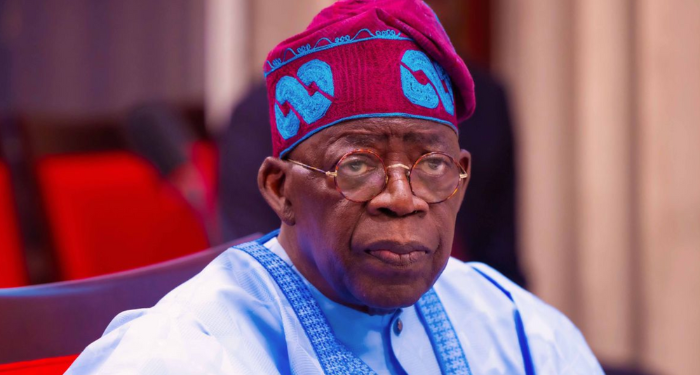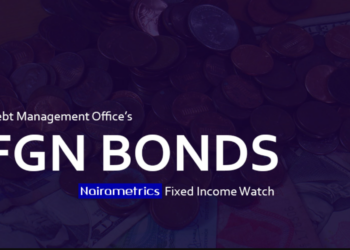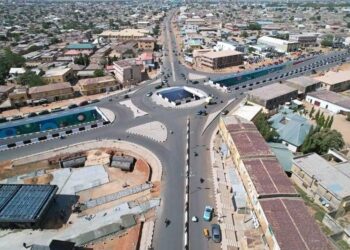Nigeria’s total public debt rose to N149.39 trillion as of March 31, 2025, marking a year-on-year increase of N27.72 trillion or 22.8% when compared to the N121.67 trillion recorded in the corresponding period of 2024.
This is according to the latest data from the Debt Management Office (DMO) for Q1 2025.
The data also indicates a quarter-on-quarter increase of N4.72 trillion or 3.3% from N144.67 trillion as of December 31, 2024.
This consistent upward trajectory in Nigeria’s debt stock reflects both fresh borrowings and the impact of a depreciating exchange rate on external debt obligations.
The federal and state governments owe a combination of domestic and foreign debts. Domestic debt is made up of FGN securities and treasury bills.
Nigeria owes countries like China, France, Germany, and Japan (bilateral debts) and multilateral institutions like the World Bank, Islamic Development Bank (IsDB), and the African Development Bank (AfDB).
External debts
Latest data from the DMO shows Nigeria has a total external debt of $45.9 billion or N70.63 trillion using the prevailing exchange rate.
Nigeria’s external loans come from a diverse group of lenders and are categorized by the DMO. The first are Multilateral lenders, which include the IMF, World Bank, and AfDB.
- Nigeria owes the IMF $406 million as of March 2025, but has since paid down the entire loan following a statement by the federal government back in May. However, Nigeria owes the World Bank $18.3 billion, up from $17.8 billion as of December 2025.
- AfDB, which is the African Development Bank 6 credit facilities due from Nigeria with a total sum of about $3.5 billion. However, the AFC arranged syndicated loans have a balance of $133.6 million. In total, multilateral lending is $22.5 billion.
- The next group of creditors are bilateral, which are mostly foreign countries that extend loans to Nigeria. The biggest amongst them is China, with a total loan balance of $5.16 billion out of the total external bilateral loans of $6 billion. Nigeria owed China about $5.3 billion back in December. France is second with just $609 million in loans.
- The next group of lenders is commercial, represented largely by Eurobonds. Nigeria’s Eurobond remained at $17.32 billion between December 2024 and March 2025.
- Eurobond, a dollar-denominated mutual, floated by the Federal Government, was first issued in Nigeria in 2011.
Summary
- Multilateral Lenders – $22.5 billion
- Bilateral Lenders – $6.7 billion
- Commercial Lenders – $17.32 billion
Domestic debt hits N78.7 trillion
Latest data from the DMO shows Nigeria has a total domestic debt of N78.76 trillion at the end of March 2025.
Nigeria’s domestic portfolio is made up of various instruments: FGN bonds, Nigerian Treasury Bills, FGN Sukuk, FGN Saving Bonds, FGN Green Bonds, and Promissory Notes.
A breakdown of the debts is as follows:
- FGN Bonds constitute 79.85% of the total domestic debt, which amounts to N59.8 trillion. This includes both FGN Naira and US Dollar Bonds.
- The second largest domestic creditors are holders of Nigerian Treasury Bills with a total debt of N12.7 trillion. They constitute 16.96% of the total domestic debt.
This is followed by Promissory Notes, otherwise called P-Notes, with a total sum of N1.301 trillion as of March 2025.
The P-Notes fell from N1.542 trillion in December 2024, reflecting the recent federal government’s efforts to settle Ministries, Departments, and Agencies (MDAs) contractors and suppliers.
FGN Sukuk bonds remained steady at N992.6 billion during the period of December 2024 to March 2025, according to DMO data. The bonds are usually used to fund infrastructure projects like roads and bridges in the country.
FGN saving bonds come next with a total debt of N82.6 billion in March 2025.
Also, FGN Green Bonds constitute the least, with a total debt of N15 billion, and have remained this way since December 2022.
Summary
- FGN Bonds N59.8 trillion
- Nigerian treasury Bills N12.7 trillion
- FGN Sukuk N992 billion
- FGN saving bond N82.6 billion
- FGN Green Bond N15 billion
- P-Notes N1.3 trillion
What you should know
With Nigeria’s debt on a 22.8% year-on-year increase, analysts caution that broader sustainability remains a concern.
Also, some analysts have expressed concerns over the fiscal regime of President Bola Tinubu’s administration, describing the increase in debt servicing from N8 trillion in 2024 to N16 trillion in 2025 as a ‘red flag’.
To reduce dependency on borrowing, Nigeria will need to expand non-oil revenues, rein in recurrent spending, and deepen structural reforms.





















